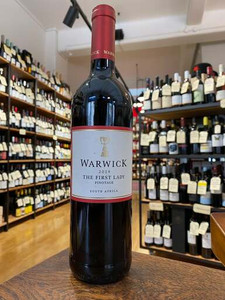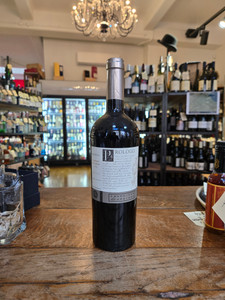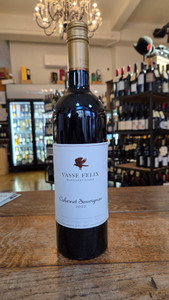
Deep dark fruits dominate the nose initially with blackberry compote and black plums, and dark chocolate. Dark berries follow on to the palate with dried herbs, cassis and dark chocolate.
Pair with barbecued pork spare-ribs or grilled rib-eye steak.
Warwick Estate
Warwick Estate is a high-end South African winery in the Stellenbosch region of South Africa. The Estate has a rich farming history dating back to 1771.
Then a fruit farm, Warwick only emerged on the forefront of South Africa’s wine scene when Stan and Norma Ratcliffe bought the estate in 1964 and started developing the land with an extensive focus on the classic Bordeaux varieties: Cabernet Franc and Cabernet Sauvignon.
Through determination and commitment, Norma Ratcliffe became one of the Cape’s first female winemakers – and one of its most illustrious wine personalities, whose legacy is immortalised in the Warwick “First Lady” range.
The first wine under the Warwick label was released in 1984, then named “La Femme Bleu” – “Blue Lady” as it is known today. Two years later, in 1986, the Warwick Trilogy – a three-varietal Bordeaux-style blend – was released and has since been recognised as a truly iconic wine, with many vintages adorning some of the greatest wine lists in the world. Throughout the years, Warwick’s wines have won many awards, firmly establishing the brand as a South African icon.
Cabernet Sauvignon
In the seventeenth century in southwestern France, an accidental breeding occurred between a red Cabernet Franc grape plant and a white sauvignon blanc grape plant and thus was born the most popular grape among American wine drinkers: Cabernet Sauvignon.
Cabernet Sauvignon is a red grape varietal known for its thick, durable skin, and the vine’s resistance to the elements. After the birth of the grape, the Cabernet Sauvignon varietal began to be adopted in parts of France by winemakers searching for more durable plants that were relatively easy to grow, and the grape found its champion in the region of Bordeaux.
It actually wasn’t proven that Cabernet Sauvignon was born from Cabernet Franc and Sauvignon Blanc until 1996 by wine researchers at UC Davis.
The Bordeaux winemakers loved the grape’s healthy level of tannins, which meant the wine could evolve in the bottle for many years. They also determined that it responded incredibly well to spending time in oak, as the oak brought out beautiful new flavours. The result was a wine that was full-bodied with a medium-level acidity that was fantastic for drinking with food. As they started playing with the varietal, they began blending it with other grapes, such as merlot, and created the world’s most famous wine blend: the Bordeaux blend.
As the Bordeaux wine blend evolved into one of the world’s most famous and highly coveted wines, the Bordeaux brand spread across the globe, and with the press for Bordeaux went the Cabernet Sauvignon grape. As the name of the grape spread, and more people around the world began to grow it, many took to calling Cabernet Sauvignon the great colonizer, as it became the most widely planted grape globally, until Merlot overtook it in the nineties.








